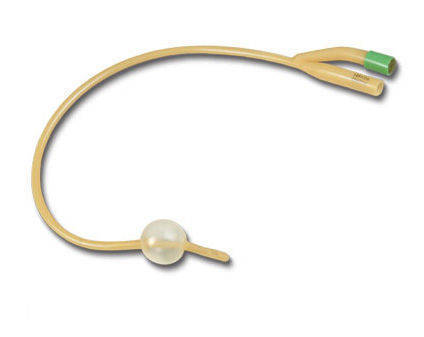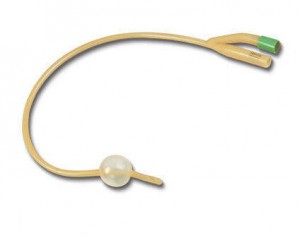THE FUNCTION OF OUR BONES
Our skeletal system provides our bodies a rigid framework to support the organs of the whole body. The skeleton supports the body against the pull of gravity. The large bones of the lower limbs (femur, tibia and fibula) support the trunk when standing. The cranium, also known as the skull, surrounds the brain to make it less vulnerable to injury. The vertebrae or the bones of the spine surround and protect the spinal cord, which is very vital. The bones of the rib protect the vital organs of the heart and lungs. The skeletal system and the muscular system of the body work hand in hand to enable us body movement, perfectly engineered to sustain stress and different ranges of motion.
WHAT IS A SPINAL CORD INJURY?
A spinal cord injury is any damage to any level of the spinal cord. It may be caused by several factors—a direct injury to the cord itself or indirectly from trauma to the surrounding bones, tissues, or blood vessels. Among usual causes are falls, motor vehicle accidents, industrial accidents, sport injuries, gun shot wounds and other trauma.
The symptoms that may occur may vary depending on the level of the spinal cord that is affected.
The spinal cord has divisions—the cervical spine (neck part), thoracic spine (at the level of the chest), lumbar spine (middle part going towards the lower back), sacral spine (lower back at the level of the bladder going to the end at the rectum). Pain and loss of sensorimotor function is expected in a spinal cord injury. If there is a cervical spine affectation, breathing may be affected. Severe cases would necessitate having the patient intubated and hooked to a mechanical ventilator. The patient may have loss of normal bowel and bladder control, numbness of body parts, neurosensori changes, spasticity of muscles, body weakness and may even have paralysis.
SPINAL CORD INJURY AND THE BLADDER
The Urinary system of the body has three major functions to achieve homeostasis or balance—urine formation by the kidneys, temporary urine storage by the bladder and excretion of the urine through the urethra to remove body wastes.
In the acute phase of the spinal cord injury, a urinary catheter is inserted to the urinary meatus in order to allow the patient to have urine output because depending on the severity of the injury, some persons cannot feel the urge to urinate or some may feel the urge to urinate but cannot expel the urine because the muscles of the urinary bladder and urethral sphincter muscles does not function well. This is due to the nerves that are at the end of the spinal cord (sacral level of the spine) which control the bladder. The spinal cord injury does not affect the function of the kidney itself, unless there had been a blunt trauma to the kidneys. What is affected is how the collected urine in the bladder is released for excretion.
INDWELLING URINARY FOLEY CATHETER
A foley catheter is a flexible tube that is inserted to the urinary meatus to be indwelled in the urinary bladder to allow urine to pass. The lumen of the tube that is indwelled in the bladder is open to drain the collected urine in the bladder and the other end of the tube is connected to urine bag in order to be collected. Urine bags have calibrations in order to measure the urine output of the person. Urine output monitoring is important to check for foley catheter patency and to measure if fluid intake and output is normal.
Catheterization is also done to prevent bladder distention and urinary retention. This is also done in order to prevent infection that may be due to prolonged urinary retention in the bladder. It is inserted under strict aseptic techniques in order to prevent infections. However, prolonged catheterization also has a huge risk for urinary tract infections so a bladder training program is usually done as a rehabilitative program to decrease the risk of urinary tract infections and allow the person to have a plan of bladder emptying in an acceptable manner when it is convenient for you.
INTERMITTENT CATHETERIZATION PROGRAM (ICP) AS A REHABILITATIVE TECHNIQUE
The goal of intermittent catheterization program is to prevent urinary tract infections caused by indwelling foley catheters and to allow the person or his caretaker to achieve a sense of independence have participation in the rehabilitation of the person. After the person is stabilized, a Cystometry is done by the doctor to assess the function and capability of the bladder to hold and expel urine. Ideally the urinary bladder should have no retention. However, most people have residual urine. This is okay as long as it is in minimum amount and does not cause bladder distention and infection in the urinary tract. Amounts routinely under 100 cc are normal.
The intermittent catheterization is routinely done every 4-6 hours. However, it is advisable to start with 4 hours interval because of the risk for bladder distention. The person is advised to lessen the amount of fluid intake for the first days of intermittent catheterization and signs and symptoms of bladder distention should be watched out for. The amount of fluid intake must be more or less equal to the amount of urine output. However it also depends on how much the person sweats or if there is vomitus. These should also be taken in consideration.
Recording of daily progress is important to see the trends of rehabilitation. Every 4 hours, the amount of fluid intake, free void, forced void, and residual urine is recorded to know the progress. To measure the free void, diapers are weighed and free voidance of urine is measured in cc/ml. Forced urine done by valsalva maneuver to the level of the bladder to see if there is urine output from the meatus. Residual urine is measured by inserting a straight catheter to drain the bladder contents.
At night time, it is advisable to insert an indwelling foley catheter in order to facilitate a good night’s sleep and to prevent bladder distention. This is the time wherein the person can generously drink fluids because there is less risk bladder distention.
The schedule should be followed promptly in order to see better results. When the patient improves and more free void is being expelled, the person may now proceed to 8 hours interval, 10 hours interval, 12 hours interval until he reaches less than 100 cc in residual urine output. When this happens, the patient may have diapers or void as a normal person would.


